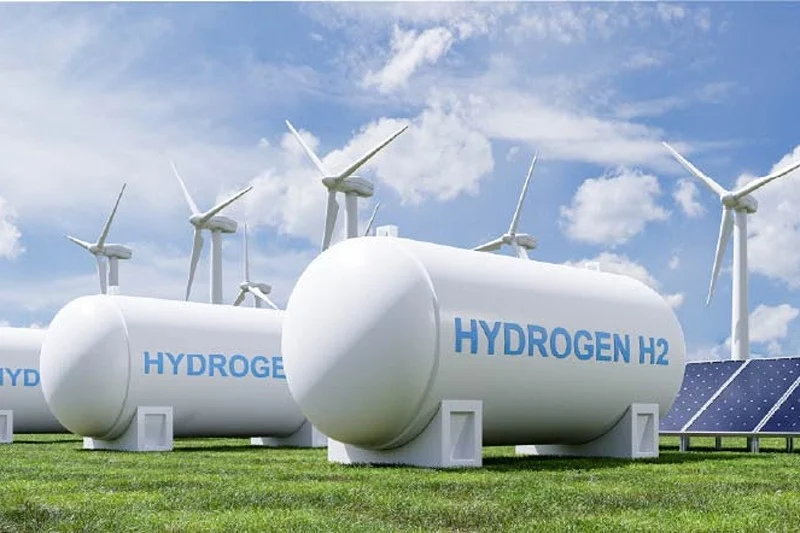An international scientific study, published in the *International Journal of Hydrogen Energy*, opens a new pathway for energy development in Morocco. For the first time, it comprehensively models the capacity for green hydrogen production via offshore wind along the Moroccan coasts, combining historical data, physical modeling, and climate projections. This research thus lays the groundwork for an ambitious energy strategy tailored to the realities on the ground.
The study relies in particular on ERA5 data provided by the European Centre for Medium-Range Weather Forecasts (ECMWF), covering the period from 1981 to 2020 and measured at an altitude of 100 meters. Four types of offshore wind turbines, ranging from 3 to 8 MW — including the powerful Vestas V164-8.0 MW — were evaluated. By cross-referencing the power curves of the turbines with the efficiency of electrolyzers (60 to 70% efficiency), the researchers were able to accurately estimate the production of green hydrogen for each site studied.
The southern Atlantic region of Morocco, particularly the Dakhla area, stands out as the most promising zone. With an average annual wind speed reaching 9.5 m/s at 100 meters altitude, the capacity factor exceeds 40%, equivalent to over 3,500 hours of full power per year. A single 8 MW wind turbine could then generate up to 700 tons of green hydrogen per year — a quantity that corresponds to an annual reduction of about 50,000 tons of CO₂.
However, this production remains largely underutilized, as Morocco has so far prioritized solar and onshore wind energy. The study also incorporates climate scenarios from the CMIP6 project, with three socio-economic pathways (SSP 2.6, 4.5, 8.5). The most severe scenario (SSP 8.5) even anticipates an 8% increase in wind speed in Dakhla by 2081-2100, which could raise the potential production to 750 tons annually. Conversely, some coastal areas may experience a decrease in wind, highlighting the importance of precise and flexible territorial planning.
On the technological and industrial front, this study echoes Morocco’s National Hydrogen Strategy (2021), which plans to use existing port infrastructures, such as that of Tangier, to convert hydrogen into ammonia or liquefy it for export. This integrated energy corridor, combining wind production, electrolysis, liquefaction, and port logistics, could thus position Morocco as a key player in the European supply of clean hydrogen.
For the researchers, this work is no longer limited to mere theoretical potential. It provides a quantified, rigorous foundation ready to be adapted to an industrial scale. This advancement offers a concrete roadmap to achieve Morocco’s goal of four million tons of green hydrogen per year by 2050.
Moreover, this innovative model provides Southern countries, rich in coastal winds and equipped with maritime infrastructures, with a reproducible example based on a smart synergy between natural resources, industrial capabilities, and energy sovereignty.


